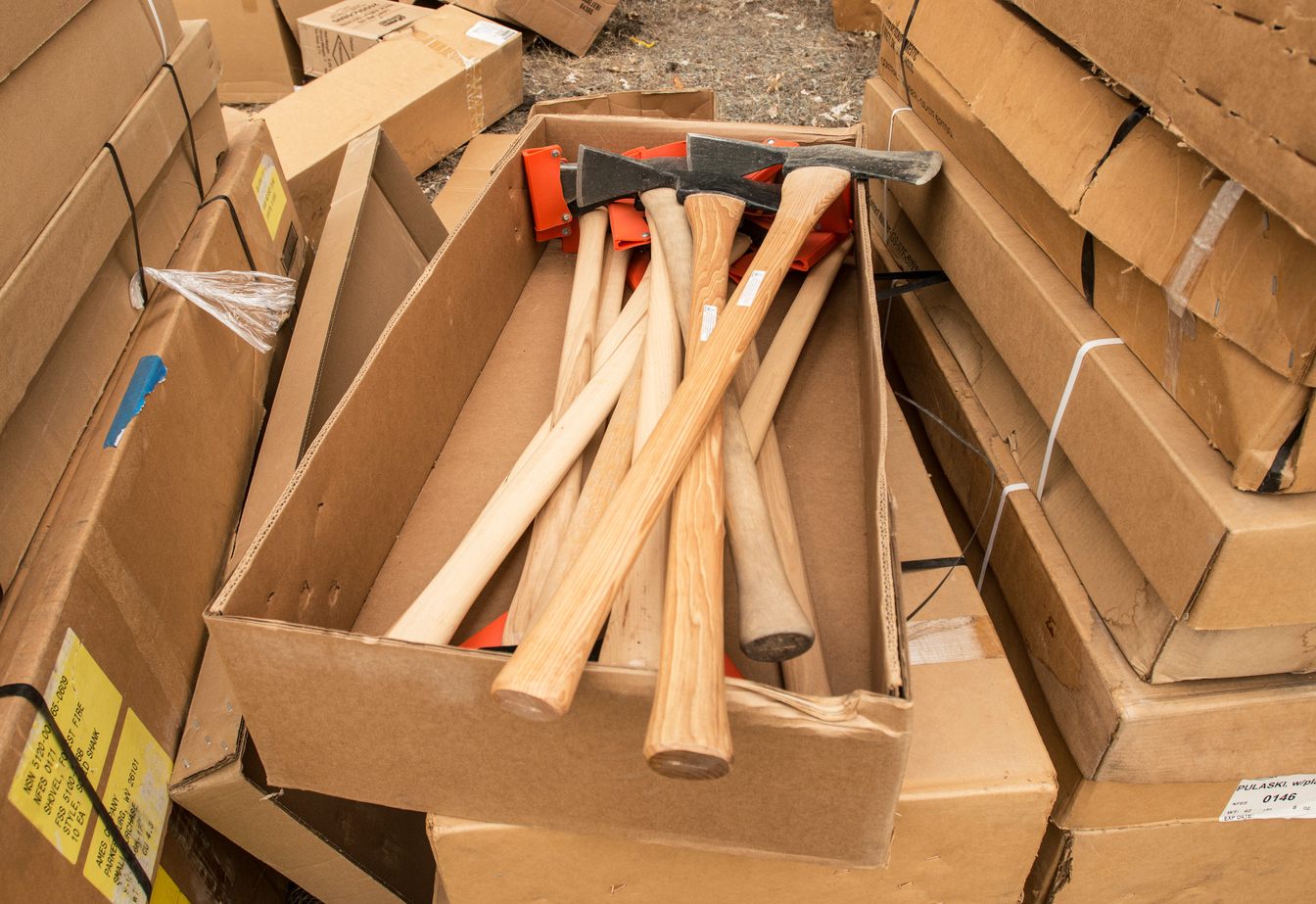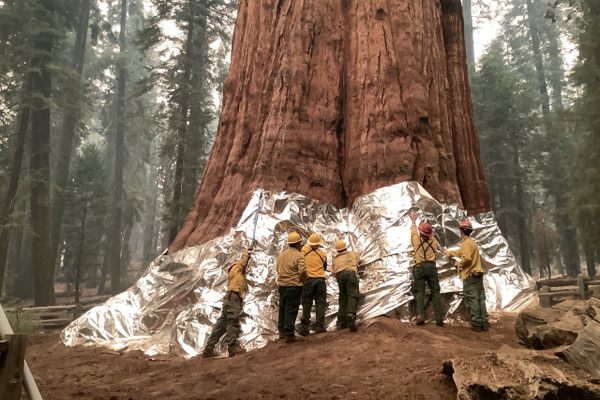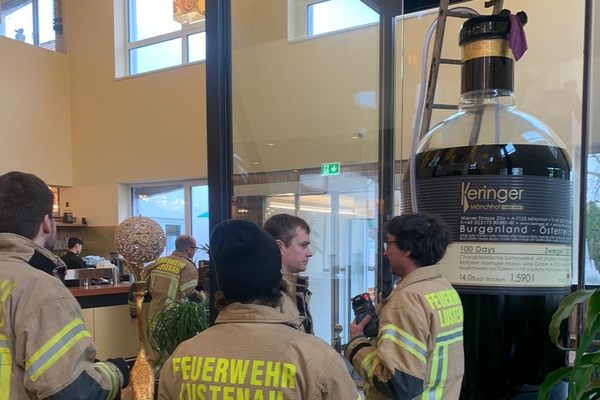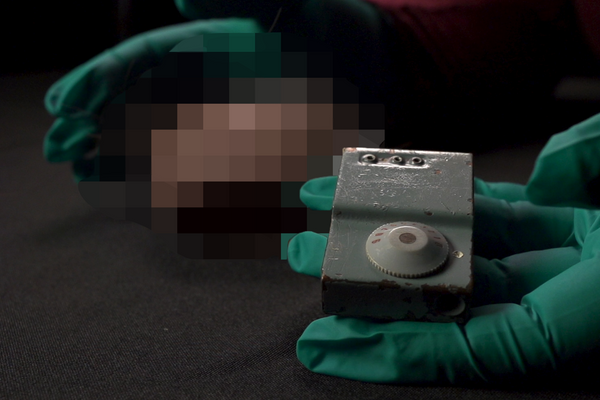The Century-Old Tool Being Used to Battle Flames in Northern California
Edward Pulaski’s part hoe, part axe invention of the 1910s remains crucial to firefighters.

Since October 8, firefighters in Northern California have been battling wildfires that numbered in the dozens at their peak and have killed at least 41 people. The flames have scorched tens of thousands of acres and leveled entire neighborhoods.
While some of the most advanced firefighting tools are being deployed in the battle—from drones that can map fires to massive Boeing 747s dropping retardant—most firefighters are wielding a century-old tool named for a hero of one of America’s most destructive wildfires.
The Pulaski is part axe, part hoe, and has been used by wildland firefighters since the 1910s. While a house fire can be doused with water, the only way to stop a wildfire is to take away its fuel. To do that, firefighters dig a “firebreak” to clear all vegetation down to the dirt so a blaze has nothing left to burn.


Bob Beckley is known as “the axe guy” at the U.S. Forest Service’s Technology and Development Center in Missoula, Montana. “Despite all the modern technology we have to fight fires, it still takes boots on the ground to stop it,” he says. “Planes and helicopters can drop water on a fire but that will only slow it down.”
In the early 20th century, when the U.S. Forest Service was created, wildland firefighters used shovels, rakes and whatever other tools they could grab to literally “beat out” the flames, according to research forester James B. Davis. Some forest rangers used a modified mining axe to dig firebreaks, but it took a man by the name of Edward Pulaski to perfect the tool that would eventually bear his name.

Pulaski was born in Ohio in 1868 and moved to the Idaho Territory looking to make a new life on the frontier when he was just 16 years old. Over the next two decades, Pulaski worked as a miner, a prospector, a cattleman, sawmill engineer, blacksmith, carpenter, and even a plumber. In 1908, he signed up to be a ranger with the Forest Service. According to author Timothy Egan, Pulaski quickly became one of the best rangers in the Bitterroot Mountains, which sprawl across the border of northern Idaho and southwest Montana.
“He knew how to calm a horse when lightning struck, and could craft a tool from a plank of rough cedar, and could pitch a lean-to in less time than it took other rangers to finish a sentence,” Egan wrote in his book The Big Burn.
Two years after he was hired by the federal government, Pulaski secured his legend as one of the best rangers the Forest Service ever had when he saved the lives of more than three dozen firefighters during the largest wildfire in American history. The Great Fire of 1910 scorched 3 million acres in Washington, Idaho and Montana in just two days, killing more than 80 people and incinerating entire towns. At the time, Pulaski was assigned to the forest around Wallace, Idaho and was leading a crew of about 45 firefighters. On the evening of August 20, hurricane-force winds fanned the flames into an inferno and Pulaski and his men were trapped. Through a blizzard of ash and embers, Pulaski led the crew into an old mine shaft and then positioned himself at the entrance to protect the men from the flames. Using his hat as a water bucket, Pulaski tried to smother the burning timbers at the entrance.

As the fire grew more intense outside, it started to draw oxygen out of the mine shaft. One man began to suffocate and decided to try to make a run for it, but Pulaski, knowing the man would surely die if he went into the flames, drew his .44 revolver. “The next man who tries to leave the tunnel,” Pulaski said, “I will shoot.” As the man retreated, Pulaski turned back to the inferno. Pulaski was soon overcome with exhaustion and he fell into the flames, burning his hands, face, and eyes. In a last-ditch effort to save himself, Pulaski tumbled backwards and poured water over his head before he fell unconscious.
A few hours later, after the fire had burned past the mine entrance, some of the firefighters began to emerge from the depths of the earth. As they approached Pulaski’s lifeless body, one of them said, “the boss is dead.”
“Like hell he is,” Pulaski muttered.
Despite having burns all over his body, Pulaski led the surviving men back to Wallace, which by then had been completely destroyed. Pulaski was blind in one eye after the fire and spent more than a month in the hospital. Amazingly, by the summer of 1911, Pulaski was back at work for the Forest Service. In the years after the fire, Pulaski spent much of his time trying to make the perfect tool to fight fires like the one he and his men had survived. Taking the idea of a modified mining axe, Pulaski created a tool that had a hoe on one side of the head and an axe on the other. With a few adjustments, Pulaski had crafted something that was tough enough to cut through the thickest underbrush while light enough that a man could carry it deep into the woods.

By 1913, firefighters across the Northern Rockies were using the tool dubbed the Pulaski. In 1936, six years after Pulaski died, the U.S. Forest Service decided that all of its wildland firefighters would use the Pulaski axe.
Ed Pulaski’s own Pulaski axe, which bears the initials “EP” on the side of the head, is still on display today at the Wallace District Mining Museum.
More than a century after it was created, the Pulaski axe is used by firefighters around the world. Beckley says that while the Forest Service has made some changes to the tool over the years, including changing the shape of the hoe end to increase cutting efficiency, it remains mostly unchanged since Pulaski first perfected the design in the 1910s.
“For firefighters on the ground,” says Beckley, “the Pulaski axe is still the most important tool out there.”
















Follow us on Twitter to get the latest on the world's hidden wonders.
Like us on Facebook to get the latest on the world's hidden wonders.
Follow us on Twitter Like us on Facebook